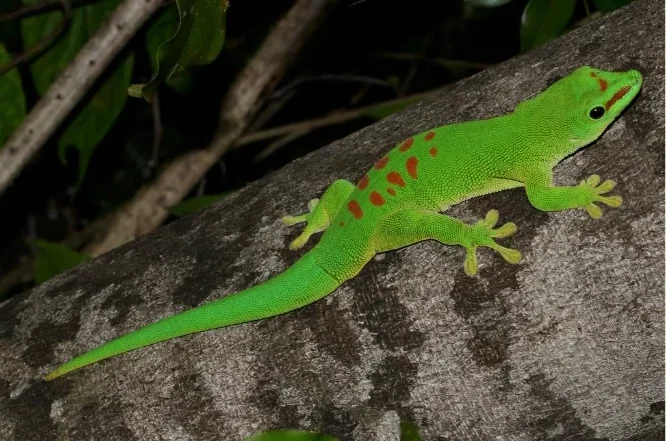If you’ve ever looked at a lizard and a snake side by side, you might have noticed they kind of look the same. Both have scales, cold-blooded bodies, and that weird stare that never blinks.
Snakes even look like lizards that lost their legs along the way. So it makes sense to ask: are lizards and snakes really related?
Yes, lizards and snakes are closely related. They both belong to the reptile order called Squamata, which means they share a common ancestor that lived millions of years ago. Over time, some lizards evolved into legless reptiles, which eventually became snakes.
So snakes are basically lizards that took a different path. But the story of how that all happened is even more interesting.
Lizards and Snakes Come From the Same Old Line
Way before snakes existed, small scaly reptiles were crawling around prehistoric forests.
These early reptiles lived over 200 million years ago and were the start of Squamata, the group that includes all modern lizards, snakes, and some lesser-known ones like worm lizards.
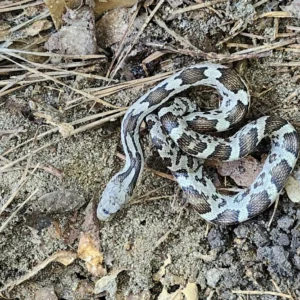
Scientists think snakes evolved from lizard ancestors about 90 to 120 million years ago. These ancestors probably lived underground or in tight spaces, where legs weren’t very useful.
Over generations, their legs got smaller and disappeared, and their bodies got longer and more flexible; perfect for slipping through tunnels or tall grass.
That’s how snakes came to be: lizards that traded legs for long, flexible bodies.
You Can Still See the Family Connection
Even though snakes look totally different now, you can still see their lizard roots.
If you look at a snake skeleton, you’ll notice tiny bones from hind legs in some species, like boas and pythons.
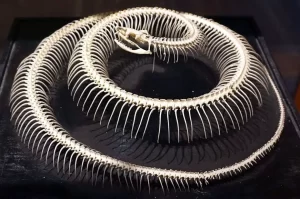
These little bones, called pelvic spurs, are leftovers from when their ancestors had legs.
Snakes also have scales made from the same stuff as lizard scales, and their skin sheds in the same way.
Both use outside heat to warm up, and both lay eggs, though some give birth to live babies.
Even their skulls are built in a similar way. They’re flexible, with joints that help them swallow large prey.
The main difference is that snakes took that flexibility to the extreme, so they can eat animals much bigger than their heads.
Some Lizards Look So Much Like Snakes It’s Confusing
Here’s where it gets tricky: not all legless reptiles are snakes.
Some legless lizards look exactly like snakes at first glance but are still lizards. You can tell them apart by a few small details:
-
Eyelids: Lizards can blink, snakes can’t. They have a clear scale over their eyes.
-
Ears: Lizards have ear holes on the outside; snakes don’t.
-
Tongues: Snakes have long, forked tongues; some legless lizards have shorter ones.
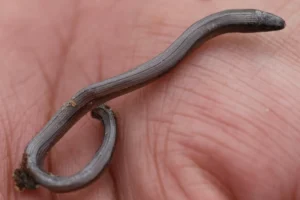
A good example is the San Diegan Legless Lizard. It looks like a snake but blinks, has tiny ear holes, and acts like a lizard.
It shows how close these groups are, even though they’ve changed in different ways.
How Their Evolution Took Different Paths
Once snakes started living without legs, their evolution went in a very different direction than regular lizards.
Lizards mostly relied on sight to hunt and explore. Snakes developed a strong sense of smell using their forked tongues and something called Jacobson’s organ.
This organ lets them “taste” the air to find prey and follow scent trails.
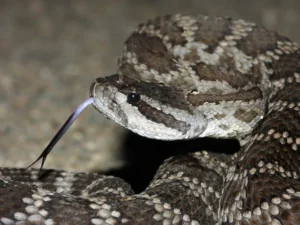
They also got jaws that open super wide, letting them eat animals whole. Lizards usually bite and chew smaller prey like insects or tiny reptiles.
And since snakes lost their legs, they had to come up with new ways to move: slithering, sidewinding, and climbing using muscles and scales alone.
Lizards kept their legs, so they run, jump, or climb the usual way.
They Still Share a Lot of the Same Traits
Even with all those differences, lizards and snakes are still family. They share a lot of the same basics:
-
Cold-blooded: Both rely on the sun to warm up.
-
Scales: Their skin keeps water in and protects them.
-
Eggs: Most lay eggs, though some give live birth.
-
Shedding: Both shed old skin as they grow.
-
Similar insides: Organs, bones, and muscles are arranged in similar ways.
So even though a gecko and a python look really different, their biology links them back to the same ancestor.
Snakes Are Basically Lizard Extremes
If you think about it, snakes are just extreme lizards.
Some early burrowing lizards probably started losing their legs because they didn’t need them underground. That gave them smoother, more flexible bodies.
Over time, they lost external ears, grew longer spines, and became great at slithering.
Eventually, these lizards became so specialized that scientists put them in their own group. But snakes are still part of the same reptile branch as lizards.
Lizards That Show How It Might Have Happened
You can still find lizards today that show what the in-between stages might have looked like millions of years ago.
For example:
-
Glass lizards look like snakes but are lizards. They have eyelids, ear holes, and can drop their tails.
-
Skinks are another clue. Some have tiny, almost useless legs, showing how evolution slowly removes limbs.
-
Burton’s legless lizard in Australia hunts like a snake but still has a lizard’s tongue and ear holes.
These “in-between” species help us see how snakes slowly evolved from lizards.
How Scientists Know They’re Related
The link between lizards and snakes isn’t just about looks, it’s backed up by DNA.
Genetic studies show snakes share more DNA with some lizards, like monitor lizards and iguanas, than with other reptiles.
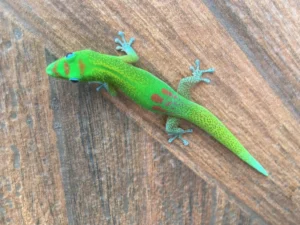
Fossils also help fill in the picture. Scientists found fossils of ancient reptiles like Najash rionegrina, a two-legged snake ancestor from Argentina, that has both lizard and snake traits.
It had small hind limbs, a long flexible body, and a partly movable skull; a perfect mix of the two.
So Why Do They Look So Different Now?
Millions of years of evolution can make differences look huge.
Snakes became specialized hunters with bodies for sneaking and striking.
They lost what they didn’t need, like legs and eyelids, and perfected what helped them survive, like their jaws and sense of smell.
Lizards stayed more general. Some climbed trees, others ran, glided, or dug. They spread into thousands of species, from tiny geckos to giant Komodo dragons.
Even though they started from the same roots, they went their own ways. Like distant cousins who ended up in very different jobs.
Lizards and Snakes Share the World Peacefully
Even though they’re related, lizards and snakes usually don’t compete. Snakes hunt slightly bigger animals, while lizards focus on insects or smaller creatures.
They live in different parts of the environment. Snakes hide in burrows or grass. Lizards bask in the sun or climb trees.
Both help keep things balanced by controlling insects and rodents.
Sometimes you might see both in the same yard, each doing its own thing without bothering the other.
Common Misunderstandings
People often think lizards turn into snakes, but that’s not true. A lizard can’t become a snake.
The connection happened over millions of years through slow changes.
Another myth is that all legless reptiles are snakes. That’s false too. Many legless lizards still blink, hear, and act differently from snakes.
Conclusion
So, are lizards related to snakes? Absolutely. They’re two branches of the same reptile family. Snakes evolved from lizards that slowly lost their legs and found a new way to live.
Even though they’ve changed a lot, you can still see signs of their shared history; in scales, skeletons, and DNA.
Next time you see a snake slithering across a path or a lizard soaking up the sun, remember: they’re distant cousins.
One gave up its legs for a smoother ride, the other kept them and stayed closer to the way reptiles first moved millions of years ago.
Hi, my name is Ezra Mushala, i have been interested animals all my life. I am the main author and editor here at snakeinformer.com.

